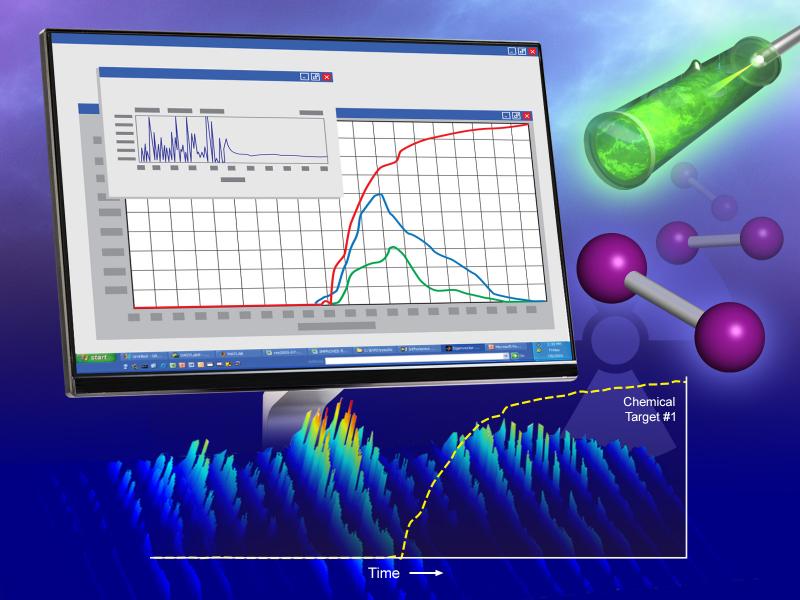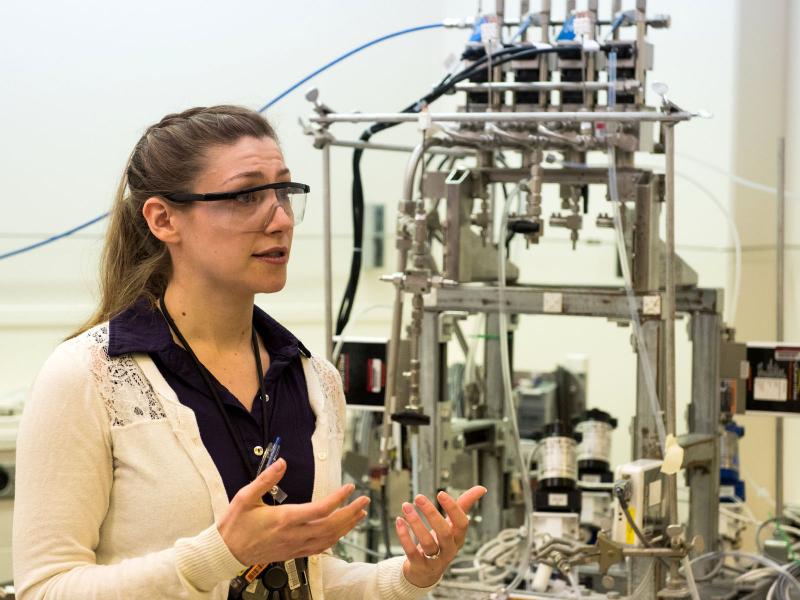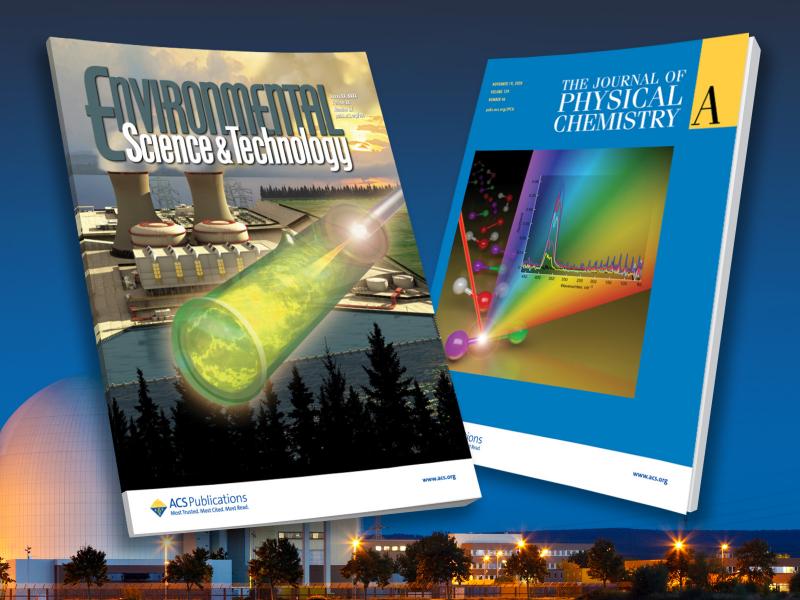Across the nation, environmentally minded scientists and engineers are leading a new generation of nuclear reactor designs. They see nuclear power as a clean, carbon-free energy source along with hydropower, wind, and solar.
Several of the innovative, next-generation reactor designs are safer, smaller, modular, and more mobile. They may power space flights, run on recycled nuclear fuel, and even act as portable generators for disaster response. One design, molten salt reactors (MSRs), are gaining momentum in the nuclear community.
But, before any of these new reactor designs become reality, they need to undergo many rounds of safety and operational testing.
The arduous task of reactor improvement and testing just got easier, thanks to a Pacific Northwest National Laboratory (PNNL) innovation that combines remote, real-time testing and continuous monitoring of off-gas byproducts. Coupled with a software package geared toward plant operators, the development lays a foundation for remote, nearly instantaneous monitoring in a new era of reactor design.
"Real-time monitoring is a valuable tool, particularly in the development of next-generation reactors. This can help designers more efficiently and effectively design and test flow loops, mechanisms, or processes," said Amanda Lines, a PNNL chemist. "Also, when they ultimately deploy their reactor systems, this gives operators a tool to better understand and control those processes."

A chemical recipe, only backward
A key off-gas byproduct from nuclear power generation is iodine, which is produced in several forms. In liquid-fuel molten salt reactors, iodine compounds would be monitored by taking samples at power plants and analyzing them in a remote laboratory. This method is both slow and expensive-not to mention the added safety challenges and complexity of analyzing radioactive samples in a laboratory. Real-time monitoring involves no direct human interaction with the samples, and offers a less risky, more efficient alternative.
"It's a real game-changer in terms of the steps you have to go through, and the timeline to sample iodine and other chemical species," said Lines.

Off-gas fission products are produced in all nuclear reactors. Iodine gas is a particular concern because it is radiotoxic, can easily vaporize and, if released, becomes airborne. The operation of molten salt reactors would require iodine be treated and scrubbed from the system as it is produced in real-time. This is not necessary in conventional light water reactors because the iodine is trapped in the fuel rods. To enable the real-time scrubbing, molten salt reactor plant operators will need continuous information about iodine levels.
The existing processes of tracking radioiodine levels are complex and expensive. This involves unpacking chemical behavior at the molecular level, since iodine can continually morph by binding with other elements, creating new molecules with different properties. This would be like baking a spice cake and then asking someone to figure out each ingredient.
Hunting chemical fingerprints
The research team focused its sights on targeting two common forms of iodine-iodine monochloride and elemental iodine-and dialing in methods to quantify each. The goal was to search for the chemical "fingerprints" for each type of iodine produced using two common chemical analysis techniques-Raman spectroscopy and Fourier-transform infrared spectroscopy.
While the spectroscopy readings are useful to researchers, it was essential to convert that data into usable information for operators.
"We want an output that is easily understandable, especially for someone who hasn't spent years of their life staring at spectrometry data," said Lines.
Software solutions for off-gas monitoring
The team also developed software that takes highly sensitive, spectroscopic light readings from existing, off-the-shelf technology and transforms that data into real-time, usable information for plant operators. Next up, the team plans to take what they have learned from these studies and expand it to other byproduct gases.
"Ultimately these are tools that can help expand research and development efforts, particularly in terms of next-generation reactor design and testing. Real-time monitoring can enable new types of reactors by solving problems on the front end," said Sam Bryan, a PNNL laboratory fellow and chemist.

Sharing the knowledge
The research team is based in PNNL's Radiochemical Processing Laboratory, a non-reactor nuclear research facility, and includes: Amanda Lines, Sam Bryan, Tim J. Johnson, Heather Felmy, Kendall Hughey, Ashley Bradley, Russell Tonkyn, Thomas Blake, Andrew Clifford, Adan Schafer Medina, Richard Cox, and Jennifer Wilson.
The team's work was recently featured on the covers of Environmental Science and Technology and the Journal of Physical Chemistry. This research was supported by the U.S. Department of Energy's Office of Nuclear Energy and by the National Nuclear Security Administration.
"On-Line Monitoring of Gas-Phase Molecular Iodine Using Raman and Fluorescence Spectroscopy Paired with Chemometric Analysis" published in the January 7, 2021, online edition of Environmental Science and Technology (DOI: 10.1021/acs.est.0c06137). This work was supported by the DOE Office of Nuclear Energy's Nuclear Technologies R&D Program. The authors include Felmy, Clifford, Medina, Cox, Wilson, Lines, and Bryan.
"Absolute Band Intensity of the Iodine Monochloride Fundamental Mode for Infrared Sensing and Quantitative Analysis" published in the November 19, 2020, edition of Journal of Physical Chemistry (DOI: 10.1021/acs.jpca.0c07353). The project was funded through the DOE Office of Nuclear Energy and National Nuclear Security Administration. The authors include Hughey, Bradly, Tonkyn, Felmy, Blake, Bryan, Johnson, and Lines.






